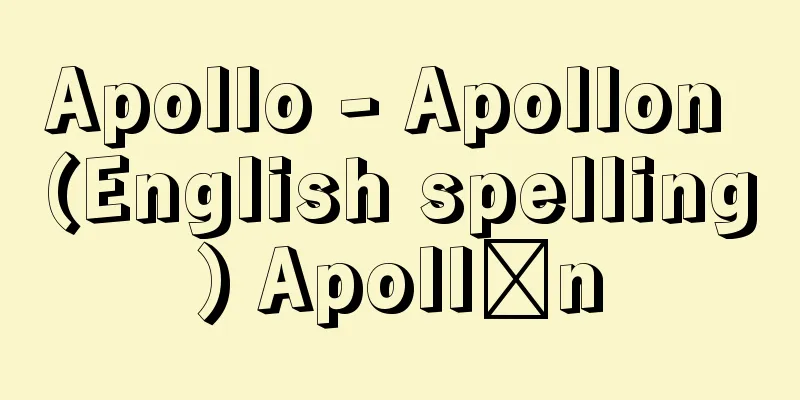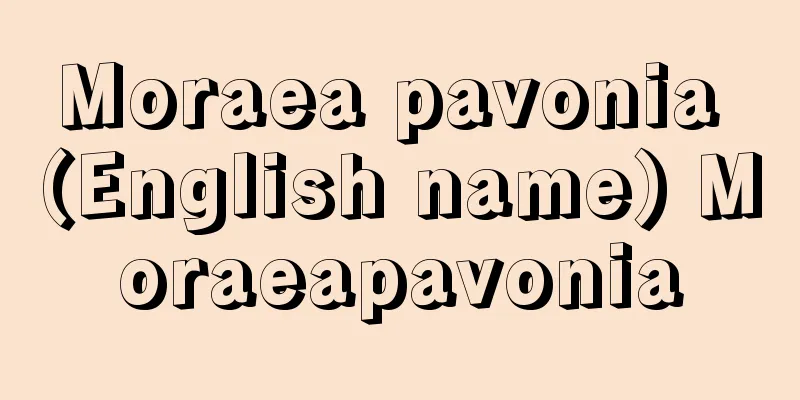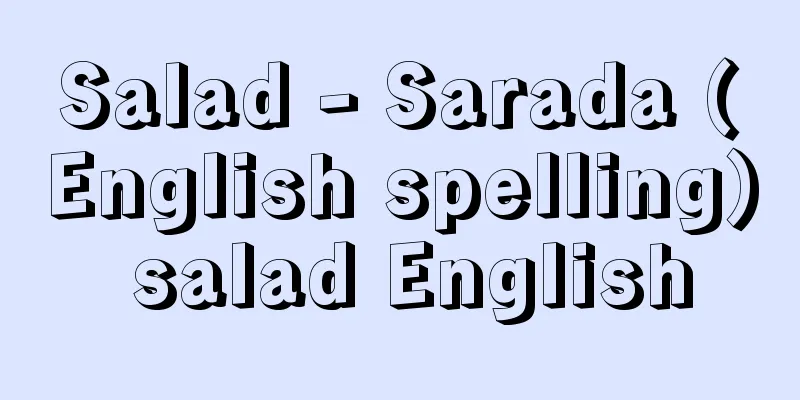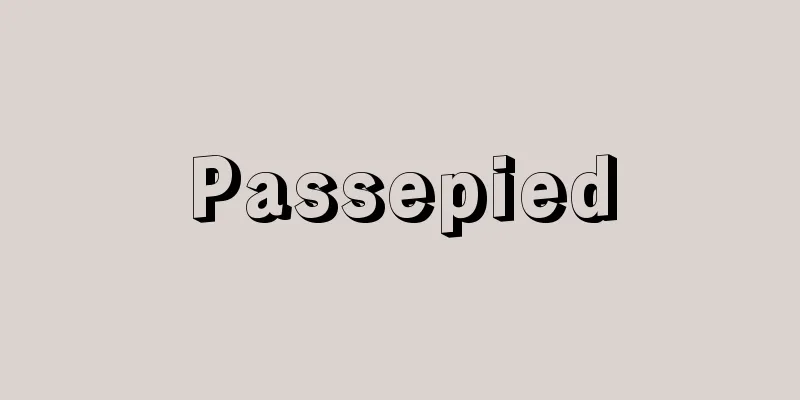Learning guidance - gakushuushido

|
It is a general term for the instruction of each subject at school (subject instruction) as opposed to life guidance in extracurricular areas. It refers to the totality of educational efforts by teachers to help children acquire knowledge, awareness, and skills, and through them develop their personalities. [Hitoshi Yoshimoto] History of TeachingThe term "learning guidance" came into widespread use after World War II as a counter term to the prewar term "professor" with the spread of new education. In prewar classes, teachers tended to one-sidedly transmit and inject the contents of textbooks into students, forcing them to mechanically memorize them. The postwar New Education radically criticized this type of teaching, which could be described as a lack of awareness of the children, and called for a Copernican revolution in teaching philosophy. In other words, it was a shift from book-centered, teacher-centered teaching to child-centered teaching. In contrast to teaching, which has the nuance of teachers imparting certain content, emphasis was placed on teaching methods that valued children's interests and spontaneity. This postwar new education in Japan shares a lineage with the "new education" movement that spread worldwide from the end of the 19th century to the beginning of the 20th century. In Germany, it was the Reformpädagogik, which criticized the rigidity of the five-stage theory of Herbart school professors and raised the slogan "vom Kinde aus" (starting from the child), and in America, it was the progressive education that opposed traditional education. These movements are characterized by, first, their strong insistence on children's spontaneous and individualized learning in contrast to the uniform, formal, and indoctrination-based teaching of the time, and second, their conception of individualized learning instruction that takes into account the individual differences in children's learning activities in contrast to the uniform, formal, and indoctrination-based teaching that tended to become indoctrination. This child-centered educational philosophy is strongly reflected in the teaching methods of the new postwar education in Japan, where children's learning activities are seen as a continuous development of experience, and where problem-solving learning is central, in which children solve concrete problems in social life through experience. However, this nature of learning instruction gradually came under pressure to change as the new education system came under criticism after the war. In particular, from the standpoint of systematic learning, problem-solving learning was severely criticized for neglecting the systematic teaching of subjects and for not being successful in shaping children's academic abilities. It is true that with "crawling empiricism," children cannot learn about the objective cultural heritage of humanity that exists beyond the realm of everyday life. The task of subject instructors must not be overlooked: conveying the essence of the subject content to children by following their interests and spontaneity. The challenge in instruction today is how to awaken children's active learning activities as they acquire the essence of the subject content; in other words, to discover how to unify the instruction of objective subject content with children's independent learning activities. [Hitoshi Yoshimoto] Basic style of instructionThe basic style of instruction can be classified at various levels depending on which of the constituent factors of the lesson one focuses on. First, learning instruction can be categorized into three types by focusing on children's "learning behavior": (1) instruction that stimulates "thinking and recognition," (2) instruction that stimulates "expression and creativity," and (3) instruction that stimulates "practice, memory, and drills." In order to stimulate intellectual and active learning activities in children and have each child achieve high unified goals and content in all subjects, it is necessary to consider the nature of instruction according to the basic characteristics of children's learning behavior. For example, when teaching "thinking and recognition," the main roles are played by "questioning" and "explanation," while when teaching "expression and creation," "advice" is used, and when teaching "practice, memory, and drills," "instruction" is used more. Secondly, learning instruction can be categorized into three types based on the "learning style": (1) whole-group learning, (2) small-group (team) learning, and (3) individual learning. "Whole-group learning" is a style in which the teacher organizes the learning activities of all the children through explanations, questions, and instructions. This style is characterized by allowing children to exchange and refine their thoughts and expressions. "Small-group (team) learning" is a style in which groups are usually made up of 5 to 6 children, and the children in each group help each other and discuss with each other. This style is characterized by being able to pick up the true feelings and diverse opinions of each child. "Individual learning" is a style in which children think for themselves, research, and write things down on their own. This style allows each student to learn according to their individual differences in academic ability, interests, cognitive style, learning pace, and so on. In school education, emphasis is often placed on group learning, but if the teacher only gives explanations and teaches in a question-and-answer format, children are likely to be placed in a passive position and fall into a negative attitude. Therefore, in order to establish active learning activities for children, it is necessary to diversify and change the learning format, such as having the whole group focus on the teacher's explanations and questions at the same time, or having each person write in their own unique way, discuss with their groupmates, and summarize the results after deliberation. Thirdly, instruction can be categorized into three types based on teaching methods: (1) presentational teaching, (2) problem-solving teaching, and (3) inquiry-based teaching. Presentational teaching is used primarily when children have only a vague representation of the subject. Teachers present teaching materials by modeling, showing real objects, and explaining, and stimulate the internal active activities of "seeing" and "listening" in children, helping them to master the subject. In problem-solving teaching, teachers set learning tasks and provide appropriate instructions and advice to help children master the subject while engaging in independent activities such as writing notes, conducting experiments, making observations, and researching materials. In inquiry-based teaching, teachers can use methods such as dialogue, debate, and question-and-answer sessions between teachers and children, and between children, to help children master the subject. The above three teaching methods are not to be applied in isolation at the discretion of the teacher. Even in one lesson, these three methods must be combined creatively and used in consideration of the interrelationships between the lesson objectives, content, and methods, as well as the developmental stages of the children and the learning group. [Hitoshi Yoshimoto] "Hirooka Ryozo, 'Collected Works on Education 2: Theory of Learning Morphology' (1968, Meiji Tosho Publishing)" ▽ "Hosoya Toshio, 'Educational Methods' 3rd Edition (1980, Iwanami Shoten)" ▽ "Yoshimoto Hitoshi, 'Theory of Questioning and Group Thinking' (1977, Meiji Tosho Publishing)" [Reference] | |Source: Shogakukan Encyclopedia Nipponica About Encyclopedia Nipponica Information | Legend |
|
教科外領域における生活指導に対して、学校における各教科の学習の指導(教科指導)を総称していう。子供たちに知識・認識・技能を習得させ、そのことを通して彼らの人格を発達させていく教師の教育的働きかけの総体をいう。 [吉本 均] 学習指導の歴史学習指導という用語は、第二次世界大戦後、新教育の普及とともに、戦前の「教授」の対抗語として広く使用されるようになった。 戦前の授業では、教師は教科書に記述されている内容を一方的に伝達・注入して、子供たちにそれを機械的に暗記させるという傾向があった。このような子供不在ともいうべき指導のあり方を根底から批判し、指導観のコペルニクス的転回を求めたのが、戦後新教育であった。つまり、書物中心、教師中心の指導から、子供中心の指導への転換である。教師がある一定の内容を教え授けるというニュアンスをもつ教授に対して、子供の興味、自発性を重視する指導のあり方が強調されたのである。 この日本の戦後新教育は、19世紀末から20世紀初頭にかけて世界的に広がった「新教育」運動と系譜を同じくしている。それは、ドイツにおいては、ヘルバルト学派の教授の五段階説の硬直化を批判して、「子供から」vom Kinde ausのスローガンを掲げた改革教育学Reformpädagogikであり、アメリカにおいては、伝統的教育に対抗した進歩主義教育progressive educationである。これらは、第一に、当時の画一的・形式的・注入的教授に対して、子供の自発的・個性的学習を強く主張し、第二に、ともすれば教え込みになりがちな一斉教授に対して、子供の学習活動の個人差を考慮する学習指導の個別化を構想した点に、特徴をみいだすことができる。 わが国の戦後新教育における学習指導には、このような児童中心主義教育思想が色濃く反映している。そこでは、子供の学習活動が経験の連続的発展としてとらえられ、子供が具体的社会生活上の諸問題を、経験を通して解決していく問題解決学習が中心であった。 しかし、学習指導のもつこのような性格は、戦後新教育が批判されるのに伴って、しだいにその変容を迫られることになった。とくに、系統学習の立場から、問題解決学習では系統的な教科教授の体系を軽視することになり、子供の学力形成に成功しないという点が厳しく批判された。確かに、「はい回る経験主義」では、子供たちは、日常生活領域を越えて、客観的に存在している人類の文化遺産を習得することはできない。子供の興味・自発性に追従することで、教科内容の本質を子供に伝えていくという教科教授の課題が見落とされてはならない。 今日における学習指導の課題は、教科内容の本質を獲得していく子供たちの能動的学習活動をいかにして呼び起こすかということ、つまり、客観的な教科内容の指導と子供の主体的な学習活動との統一のあり方を究明するところにある。 [吉本 均] 学習指導の基本様式学習指導の基本様式については、授業の構成要因のどこに視点を据えるかによって、さまざまなレベルで、そのあり方を分類することができる。 第一に、学習指導は、子供たちの「学習行為」に着目することで次の三つに分類される。(1)「思考・認識」に働きかける指導、(2)「表現・創造」に働きかける指導、(3)「練習・記憶・ドリル」に働きかける指導。 すべての教科内容において、子供たちの知的・能動的学習活動を呼び起こし、高い統一的な目標・内容をひとりひとりの子供に達成させていくためには、子供の学習行為の基本特性に応じた学習指導のあり方が考慮されなければならない。たとえば、「思考・認識」の指導に関しては主として「発問」「説明」の果たす役割が大きいし、「表現・創造」の指導のためには「助言」が、そして「練習・記憶・ドリル」の指導においては「指示」といった学習指導の方法が、より多く活用されるのが望ましいということになるであろう。 第二に、学習指導は、「学習形態」に着目することで次の三つに分類される。(1)一斉学習、(2)小集団(班)学習、(3)個別学習。「一斉学習」は、教師の説明や発問や指示などによって子供たち全員の学習活動を組織していく形態である。この形態では、子供たちの思考・表現を交流させ、練り上げることができる点に特徴がある。「小集団(班)学習」は、通例5~6名を1グループとし、各グループ別に子供たち相互が援助しあい、話し合う形態である。そこでは、子供たちひとりひとりの本音や多様な意見をすくい上げることができる点に特徴がある。「個別学習」は、子供たちが自ら考え、ひとり調べや書き込みなどを行う形態である。そこでは、学習者の学力、興味、認知スタイル、あるいは学習ペースなどの個人差に応じて、ひとりひとりに学習を成立させることができる。 学校教育においては一斉学習が重視されることが多いが、教師の説明、一問一答の学習指導だけでは、ともすれば子供たちは受動的立場に置かれ、消極的態度に陥りやすい。したがって、子供たちの能動的学習活動を成立させるためには、一斉に教師の説明、発問に集中させたり、ひとりひとりが個性的に書き、班の仲間で話し合い、皆で討議してまとめていったりすることなど、学習形態を多様に構成し、転換していく必要がある。 第三に、学習指導は、「教授法」に着目することで次の三つに分類される。(1)提示的教授法、(2)課題解決的教授法、(3)問答的教授法。「提示的教授法」は、主として、子供が対象について不明瞭(ふめいりょう)な表象しかもたない場合に用いられる。教師は模範を示したり、実物を見せたり、説明したりすることで教材を提示し、子供たちに「見る」「聞く」という内的能動活動を呼び起こし、教科内容を習得させるのである。「課題解決的教授法」では、教師は学習課題を設定し、適切な指示・助言によって子供たちにノート作業、実験、観察、資料調べなどの自主的活動に取り組ませながら教科内容を習得させるのである。「問答的教授法」では、教師と子供、子供と子供との対話や論争や問答などの方法を用いて、子供たちを教科内容の習得に向かわせることができる。 以上の三つの教授法は、教師の恣意(しい)で孤立的に適用されるものではない。1時間の授業においても、この三つの方法は、授業の目標・内容・方法、および子供の発達や学習集団の発展段階などの相互関連を考慮して、創造的に組み合わせて行使しなければならない。 [吉本 均] 『広岡亮蔵著『教育学著作集2 学習形態論』(1968・明治図書出版)』▽『細谷俊夫著『教育方法』第3版(1980・岩波書店)』▽『吉本均著『発問と集団思考の理論』(1977・明治図書出版)』 [参照項目] | |出典 小学館 日本大百科全書(ニッポニカ)日本大百科全書(ニッポニカ)について 情報 | 凡例 |
Recommend
Blowin' in The Wind
…Born in Minnesota to Jewish parents. In high sch...
Bracke, W.
…the platform adopted at the All-German Social De...
Dianthus japonicus (English spelling) Dianthusjaponicus
… [Eiji Miki]. … *Some of the terminology that me...
Asian Mouflon - Asian Mouflon
… Wild species of the genus Ovis include Eurasian...
obshchestvenno-ekonomicheskii uklad (English notation) obshchestvennoekonomicheskiiuklad
...In Japan, it is simply called uklad and transl...
Senefelder, Aloys
Born: November 6, 1771 in Prague [died] February 2...
Minshuku - Guesthouse
A lodging facility where private homes offer unus...
Abe no Uchimaro - Abe no Uchimaro
The first Minister of the Left. His name was Kura...
Emperor Tianzuo (English: Emperor Tianzuo)
1075‐1125 The ninth emperor of the Liao dynasty in...
Stationmaster - Ekicho
The person in charge of the station is responsibl...
Sodium Bicarbonate - Sodium Tansansulfate
NaHCO 3 (84.01). It is also called baking soda, a...
Suga (moth nest) - Suga
A general term for insects belonging to the Lepido...
Koplik's spots (English spelling) Kopliksspots
...The course of the disease is as described abov...
Yayoicho ruins
This is a Yayoi period ruin located on the cliff e...
Stem thallus - Stem thallus
A plant body with clearly differentiated organs. ...









